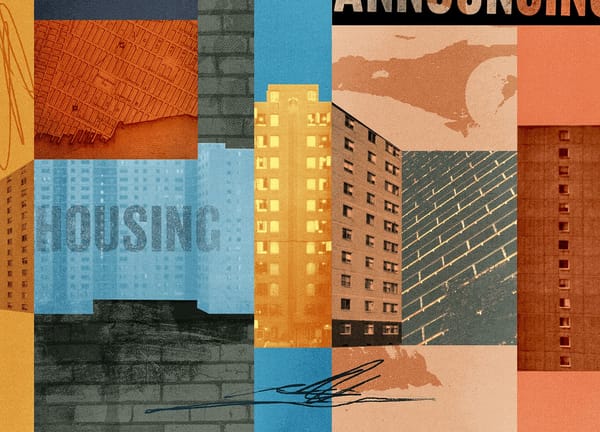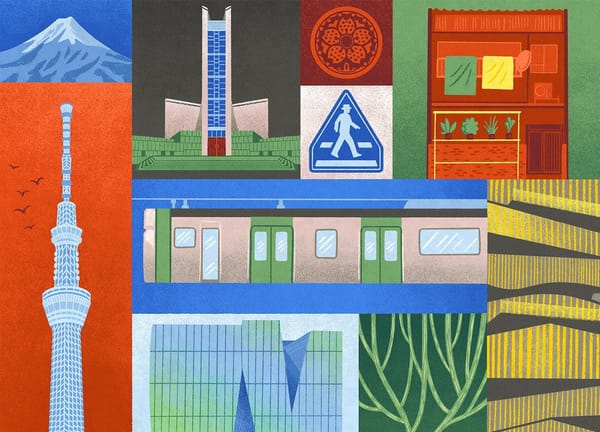The Frontier Interview: Blaise Agüera y Arcas, “Who Are We Now?”
The AI researcher on identity, sexuality, language, and paying close attention to the data
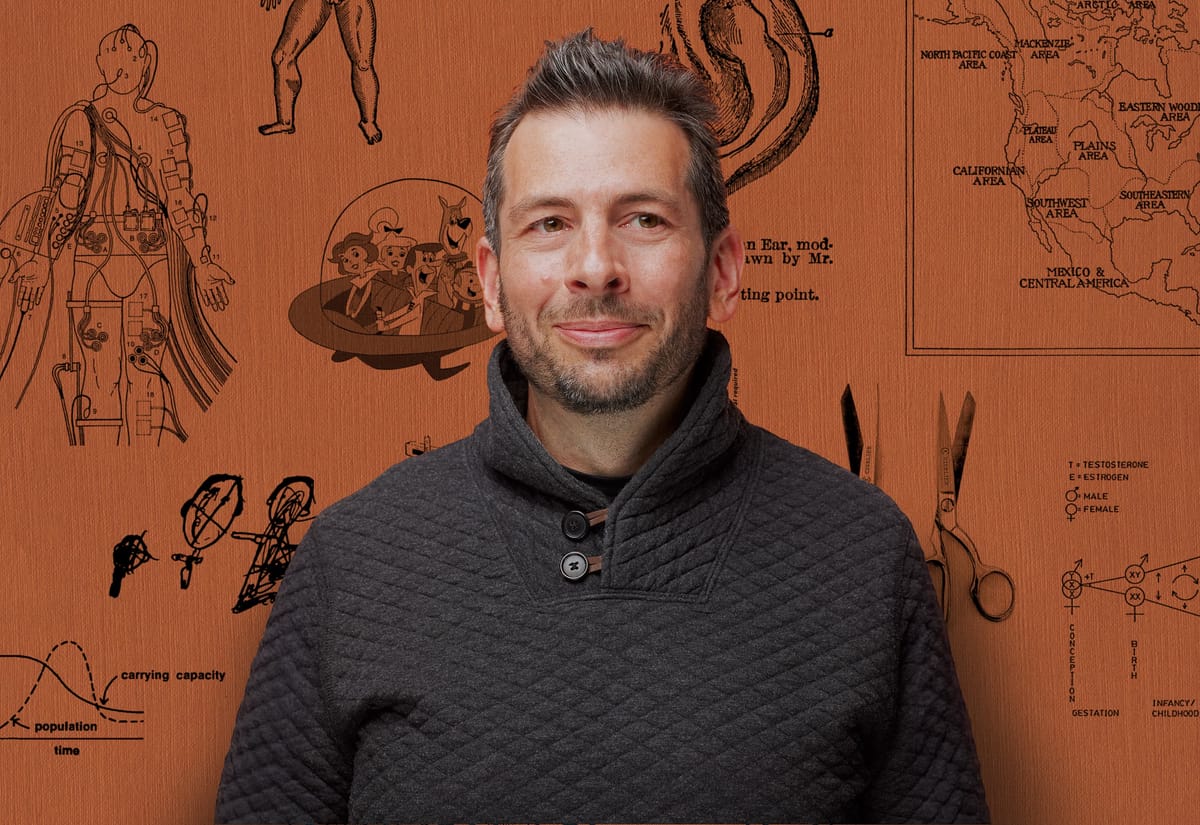
Hi everyone,
To create the data that underpins Who Are We Now? (Hat and Beard Press), Blaise Agüera y Arcas spent six years surveying thousands of anonymous American respondents about their identities, sexuality, gender, and behaviors. Their answers describe a startling variety of practices and beliefs. While reading the book, I wasn’t too surprised by that diversity; as John Salvatier memorably put it, “reality has a surprising amount of detail,” and I’m old enough to know that my own beliefs are far narrower than any reality they pretend to describe.
I did not, however, expect to hear directly from so many of those who answered these surveys. Their individual voices—brash and tentative, simplistic and nuanced—are woven through the story told by the aggregated data, breathing life into what might otherwise be a dry treatise. Agüera y Arcas, who in his day job is a leading AI researcher at Google Research, also includes plentiful historical material, and writes with disarming forthrightness about how he designed the surveys, the biases that can creep in to them, and the provisional conclusions he draws from what he has learned.
That larger story is of a species that is increasingly deviating from twentieth-century “norms” of monogamy and heterosexuality, and, in so doing, curbing fertility by choice and bringing population growth to a halt. As we strain our planet’s resources, will we be able to develop a kind of species-wide consciousness that ushers in a new age? Toggling between the individual and the global, Who Are We Now? does an admirable job of asking questions more of us should be pondering. The book is a handsomely designed and exquisitely produced object (available from Bookshop in the US and Indie Bookstores in Canada), and there is a free-to-read web version at whoarewenow.net.
As always, I’d be delighted to hear what you think after reading the conversation.
Love all ways,
Brian
Brian Sholis: This book has several interwoven threads. One has to do with explaining how to conduct large-scale research and understand the implications of the resulting data. Do you think that if we were exposed to data more often, we might better understand that we’re all a little “queer” and be better able to recognize and accept differences?
Blaise Agüera y Arcas: I’m a researcher and scientist by training, and in writing this book I was inspired by examples like Hans Rosling’s Factfulness. I feel that part of my effort was to be anti-political, in a way, to pay attention to what people are saying and only then zoom out—way out—for the overview effect, for patterns that emerge at planetary scale.
Doing that requires one to take stock of the entire distribution, to understand that it is a distribution. It’s all statistical. When you see yourself as part of a distribution, you can let that—rather than narrower concerns—become part of your identity. You can start to see humanity itself as a single entity. That is the political project of the book, really.
BS: Yes, it seems you’re decidedly not prescriptive at a local level, but you do have a larger argument about a fundamental change in human nature that’s been under way for millions of years. Can you elaborate on that broad argument, which you describe as a shift from Humanity 1.0 to Humanity 2.0?
BAA: There are a few ways of thinking about it. I discuss one in the book as “chimp versus bee,” the idea that all our common primate ancestors—all big-brained animals, really—are smart only on an individual level. They don’t enjoy a kind of cultural accumulation of knowledge, at least not anywhere close to the degree bees do—and that we do, too. That combination—large brains, able to work collectively—really is what defines humanity. Individual lives are precious, but superseding that is what we do together, a collective phenomenon.
It’s almost as if we individuals are cells of a giant body. And that body is in the middle of a big transition. It has finished its growth phase; world population has peaked and is beginning or will soon begin to decline. Our entire political economy has been oriented around growth, around supporting an increasing number of people, so this big change will necessitate so many downstream changes. One, I hope, is a recognition of how we’ve grown into this collective thing, this “collection of cells,” and a desire to ask what that means. How can we begin behaving like an entity that can create homeostasis for life on the planet? How can we regulate things better?
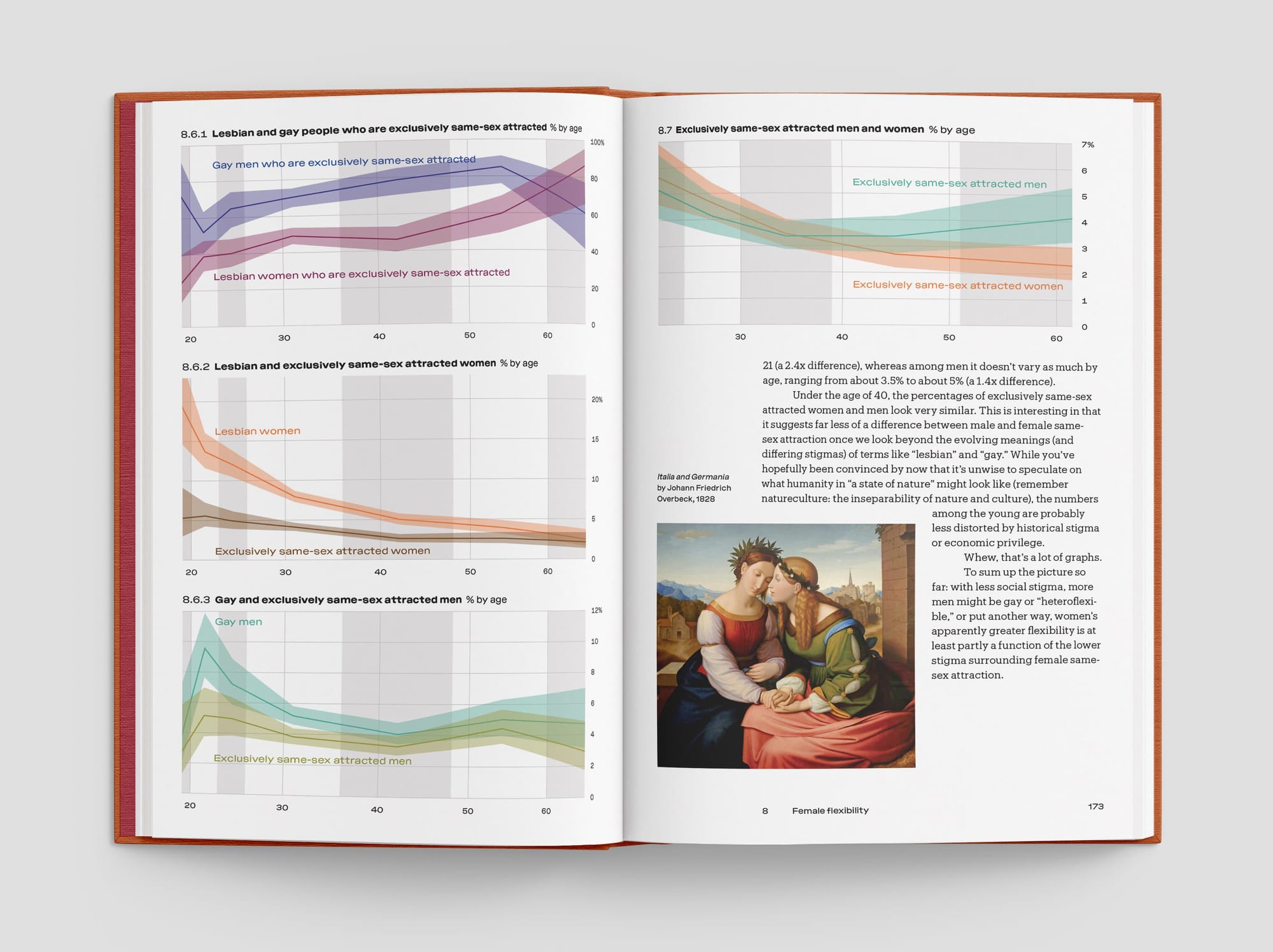
BS: You describe many phenomena in the book that suggest this kind of collective behavior is already emerging. What has yet to emerge, though, is the mental framework that unlocks our ability to see and act on this planetary level. And perhaps that same blockage is what keeps us from recognizing and valuing the great variation in our gender presentations, our biological specificities, our cultural and social identities.
BAA: Yes, totally. And in some ways the book is about language. Language is the enabler of all this cultural accumulation. We wouldn’t be where we are without language; we’d be just another species of ape. But as language emerges, perhaps so does its shadow. The shadow is the fact that language itself speciates, differentiates. There are French people and English people and Vietnamese people, and that’s also a function of language. But collective identity comes from language, too. Through it, we split apart and come together.
So one of the book’s efforts is to explore how language creates identity and how we can try to move past individual identities, or, at least, to see deeper, to understand what’s really going on. Agreement becomes easier when we all have a clearer sense of what it is we’re a part of.
BS: Perhaps this brings us to a term you use throughout the book, the “excluded middle”—the data points between the binary answers that define each end of a spectrum. We are all part of an “excluded middle” in some contexts. Is that a phrase or an idea that’s common in data science, in the hard sciences?
BAA: No, it surprisingly isn’t. Anytime you start looking at data, you can see the excluded middle. It’s like the nose on your face, so obvious that it isn’t there. But think of the questionnaires you can answer where, if you score above a certain number, you are “depressed,” for example. It’s obvious that there is a continuous variable under there, and that once you score above a seven, say, a switch doesn’t flip. So I’ve been wondering why we don’t look more closely at the continuous variables.
There is actually a parallel here with one of my missions in AI—which is the subject of my next book. For most of its history, AI was symbolic, it was all about rationality, with logic statements and grammars. Chomsky was a big part of this, and other linguists, and I think it’s all kind of bullshit. Binary language is very powerful for computing. But those early AI systems never worked because any system that properly learns can’t be based on rule sets. If you pretend your symbols are reality, you’ll run into all kinds of errors. The real world is full of continuous variables. If you aren’t looking at distributions, you aren’t seeing reality.
Stories make data comprehensible—even for people who are quantitatively minded. We’re wired to think in stories.
BS: In the book, you made passing reference to having an engineer’s mind. As a lay person interested in technology but definitely without an engineer’s mind, I can’t help but notice how much writing there is in technology about mental models, frameworks, biases, and how to correct for them. In the book you talk about how one can correct one’s mindset only slowly, and as people age that process becomes harder. Can you talk about how the engineer’s mind led you to design these large-scale studies and think about their implications?
BAA: Well, one of my inspirations, despite its flaws, is the Kinsey Reports. Alfred Kinsey did both quantitative and qualitative research. I try to do both as well; that’s why the book includes so many stories that emerged from my respondents. The two are important to bring together; the qualitative stuff, the people’s voices, gives you much more of an intuitive understanding of what’s going on, more empathy. Stories make data comprehensible—even for people who are quantitatively minded. We’re wired to think in stories.
The question about biases is complicated. For several years there has been talk about bias and AI systems. It’s a field I’ve been involved in. Until very recently, I led the team that made Google’s face-recognition engine, as well as other basic AI technologies. Do you remember Joy Boulamwini and others starting the Algorithmic Justice League to point out how face recognition didn’t work for people of color? I think our face-recognition engine was the only one that she didn’t explicitly call out because we did a better job at recognizing people of different skin tones. That was because of the care we took with our training data.
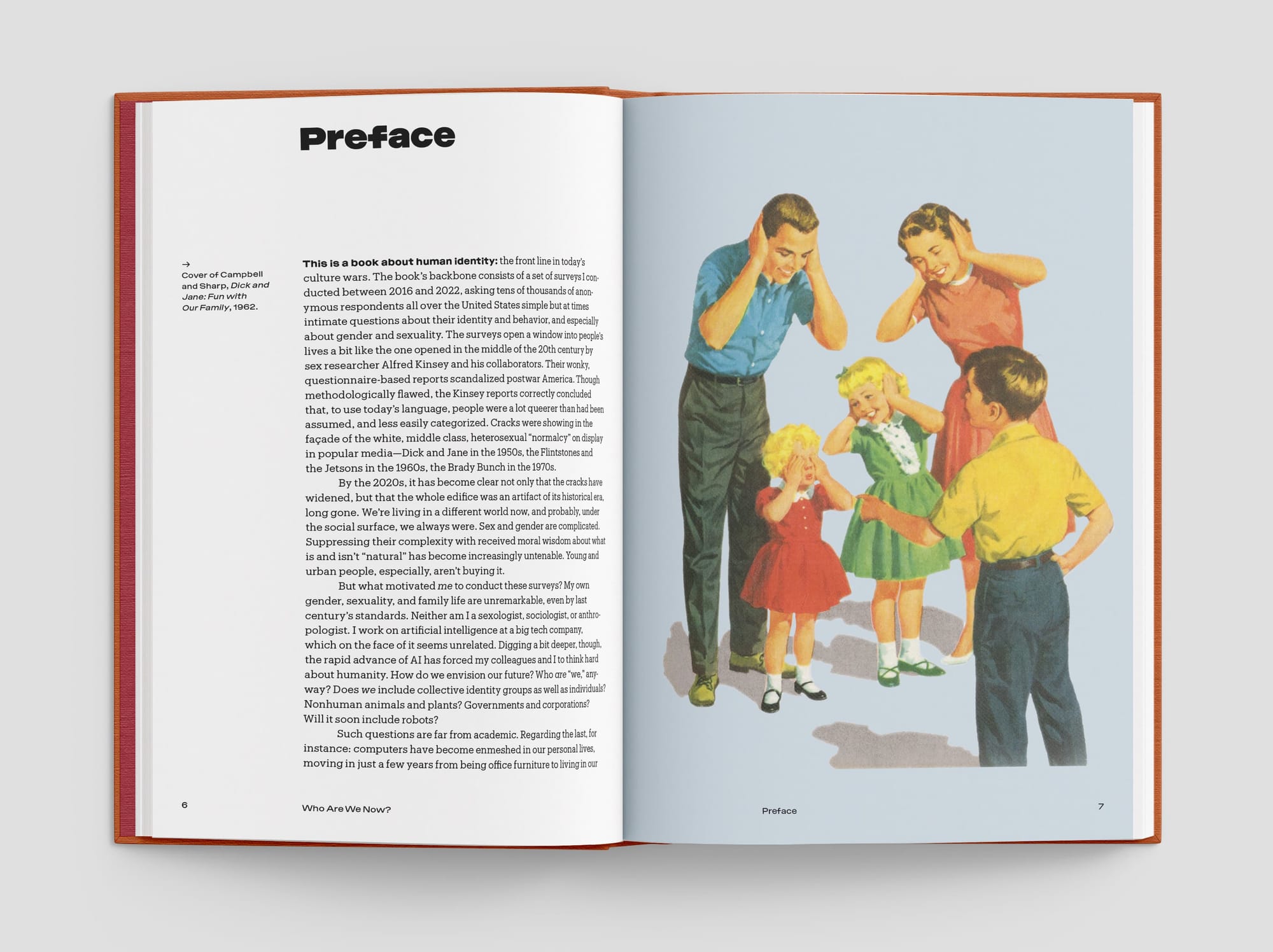
I tried to get “good data” for the research that led to this book, too. Some of my early surveys were simply to help me understand how to get around my biases and my respondents’ biases, to try and figure out how people identify. I had to discover the best ways to not impose schemas. You can never get rid of mental models or biases, but you can interrogate them, ask who they are doing a disservice to, and try to improve things slowly.
BS: All the descriptions in the book of how you designed the surveys, presenting them in full and in random order—that process-oriented thread in the book seems like a demonstration of that.
BAA: Yes. Insofar as the book has an ethical dimension, part of that ethical dimension is methodological.
BS: I want to go back to what you said about the book being kind of “anti-political.” I take what you mean by that—it doesn’t conform to conventional political terminology, the us-versus-them binaries of the American two-party system. But at one point you write, “Here, as elsewhere, we should listen to what people are telling us about themselves, and follow where the data leads.” That feels to me like a political statement, insofar as it runs counter to so much of what we assume about contemporary political discourse. Taking such a counter position, a minority position, a “queer” position is itself political.
BAA: Yes, that’s fair. I want to be open. I don’t want to take identity as an allegiance to a set of positions. My personal politics are by and large progressive, but I feel very strongly we shouldn’t accept things on a tribal basis and that if we are not open to evidence we are committing a kind of sin.
BS: Late in the book you talk about the urbanization of the planet, and you describe the US as being unusually urbanized. You also describe younger populations as being potentially more predictive of the future—something you could already see in the six years you worked on the project. I want to put those two things together to ask if the US, by virtue of its urbanization, can also be a kind of bellwether of trends to come elsewhere?
BAA: Yeah, I do. This is purely a hypothesis and can only be verified over time by more international data. But I do think that most of these observations about identity, gender, and sexuality in the US will apply globally. To the extent that age correlates with density, places that are already urbanized are predictive.
BS: I can’t help but comment on the book’s design. It’s striking in that it’s redolent of an era—the late 1960s and early ’70s—of manifesto-like paperback books, like those by Marshall McLuhan or John Berger’s Ways of Seeing. Yet in your pages, you spend a lot of time debunking that era’s medical studies, diagnoses, and scientific opinions that have aged poorly. Can you talk about why, visually, you looked to those precedents despite the problematic nature of that moment’s research?
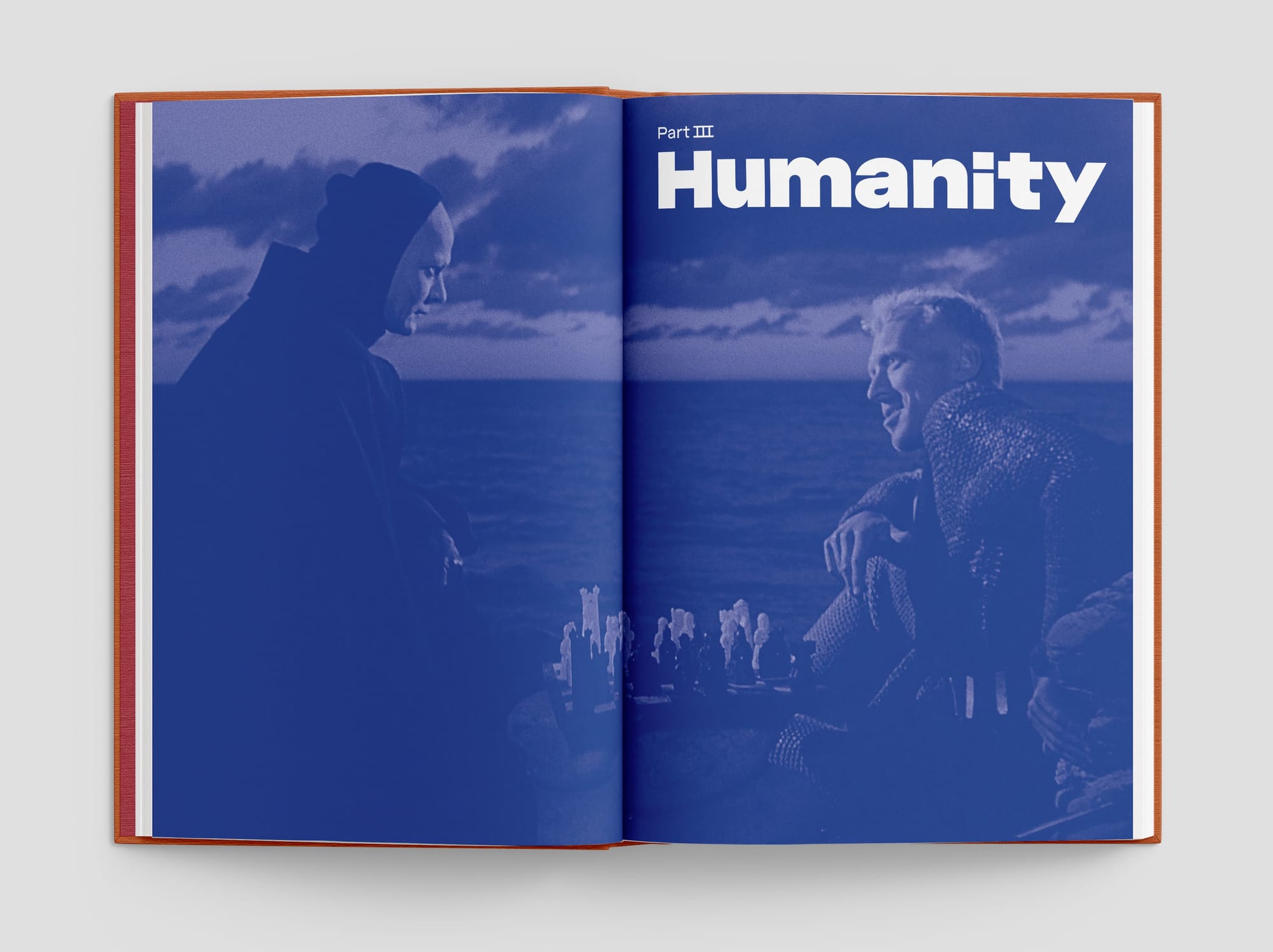
BAA: That’s an interesting observation. Partly, however, it’s that we knew we wanted to include a ton of visual material, as another “voice.” And a lot of that material is historical, out of copyright, and helps to give a sense of how much has changed and how quickly.
But also there is a kind of retro futurism in the design. I wanted to be able to talk about the future in a way that people used to talk about the future, but which we have become more uncomfortable with doing.
BS: Would you characterize that as a utopian impulse?
BAA: That’s part of it. At the same time that I’m mocking The Jetsons, there’s also an element of, “Hang on, we’re now so up our own ass with postmodernism that we’re missing out on a useful way of describing the future.” The visual language helps people to understand me when I talk about planetarity.
BS: The data necessitates so many graphs and charts; I can see how the historical photographs and illustrations are another way of broadening the surface area of people’s emotional responses, just like incorporating all those quotes does. It’s a concrete means to counterbalance the potentially dry nature of charts and mathematical formulas.
BAA: Yes, partly it’s sugar. But it’s also that bringing together materials from the nineteenth and twentieth centuries helps to remind readers of the broader context. So many forces in culture suggest that history has sped up, that time is compressed. But if you’re only looking at short time frames, you become sensitive to little bumps and you fail to appreciate the longue durée. I want to help people see long-term trends clearly.
🔗 Good links
- ⚡🎯 Frontier Magazine favorite Hannah Ritchie on how weather forecasts have radically improved, and how sharing them freely and widely can save lives
- ♻︎🤔 Toby Shorin, an independent researcher and thinker, on “moral ecosystems,” which he describe as the big idea underpinning all his work
- ☁️💻 Lately I’ve revisited Alex Danco’s prescient 2019 essay “Everything Is Amazing, but Nothing Is Ours”
- 📝📓 “I suspect everyone who keeps a diary of wanting it to be found.” Janique Vigier on the wonderful diaries of artist Anne Truitt.


